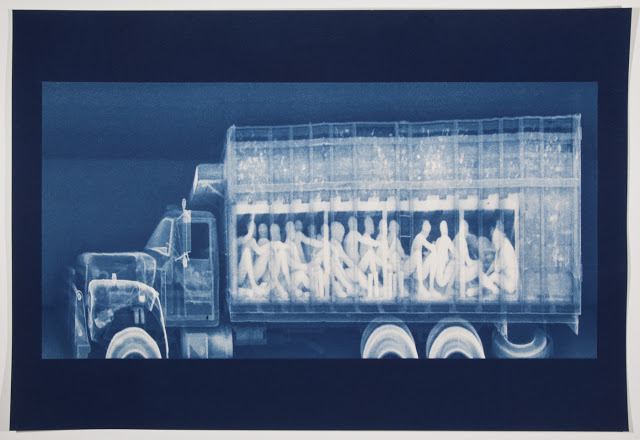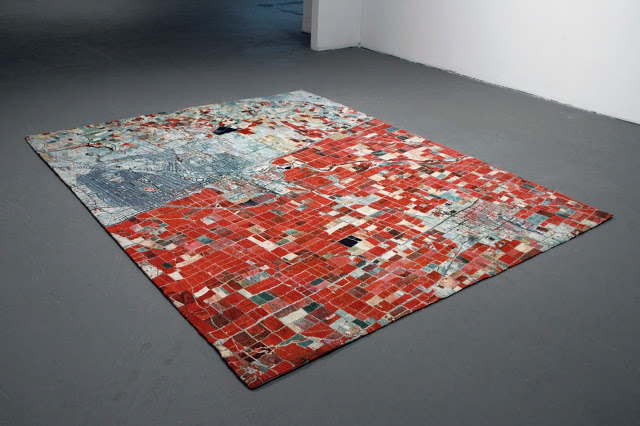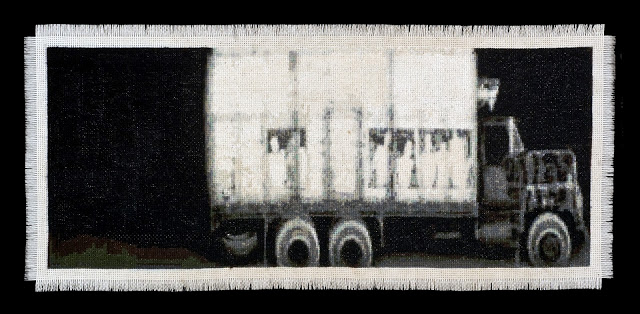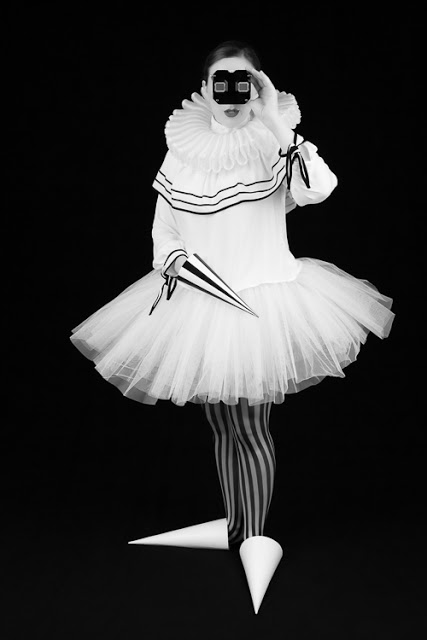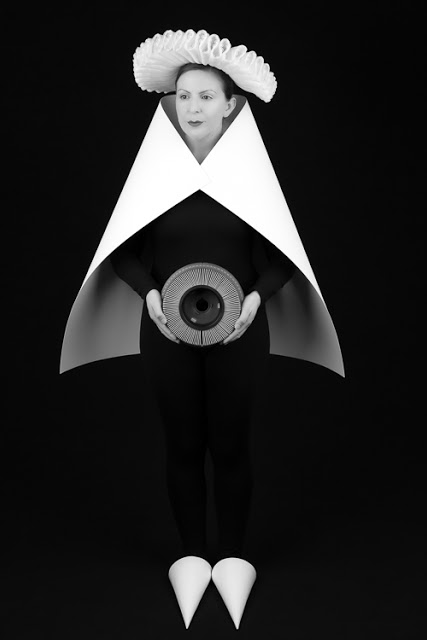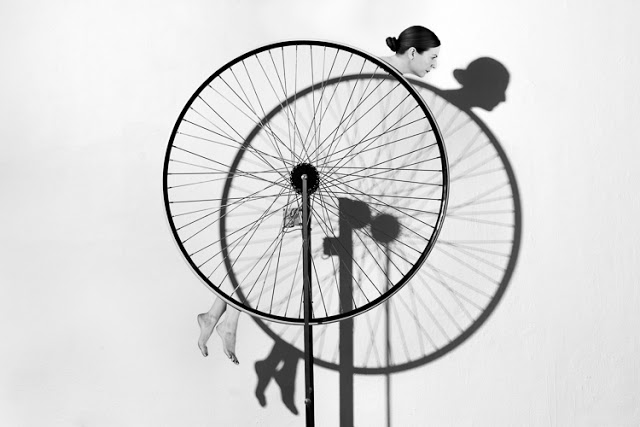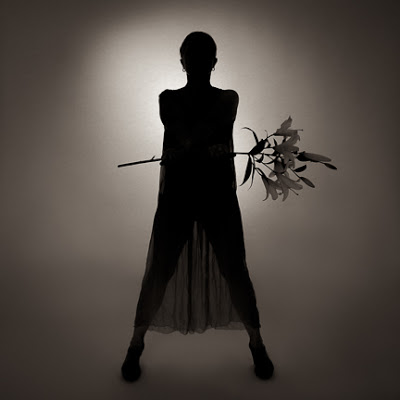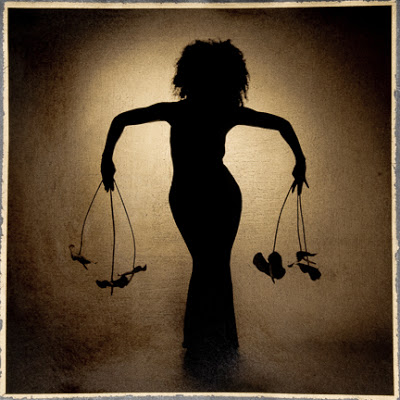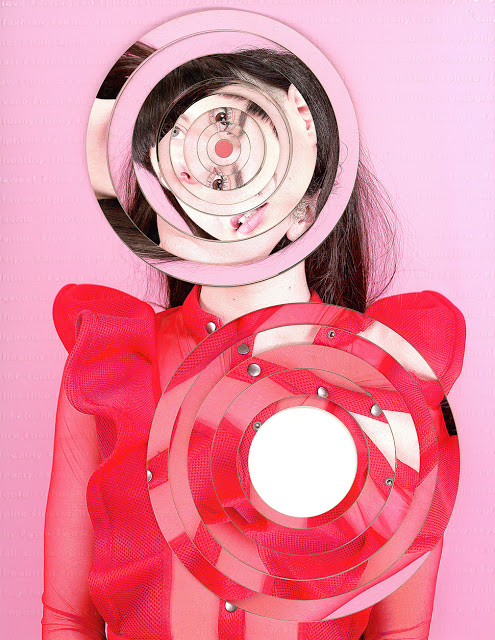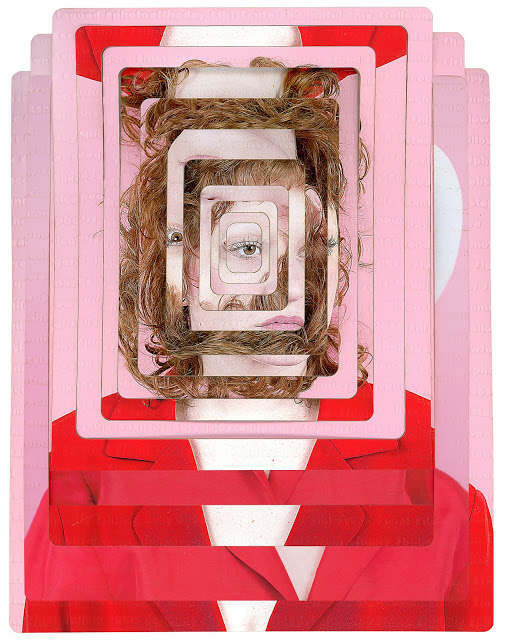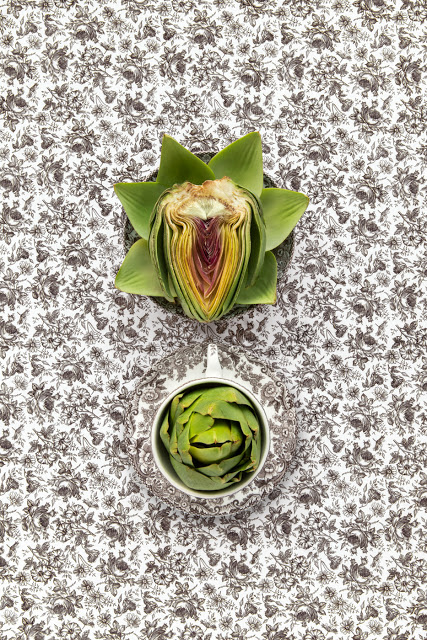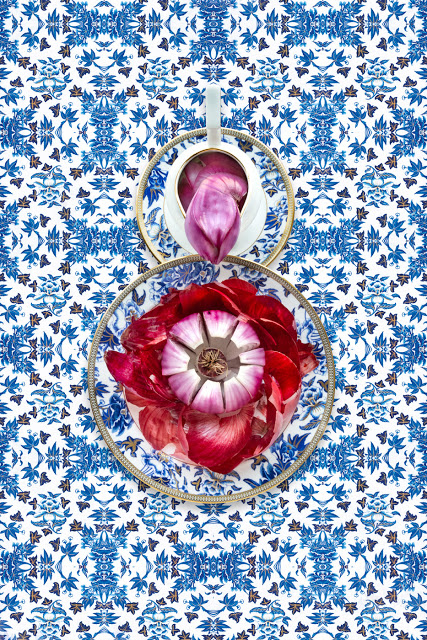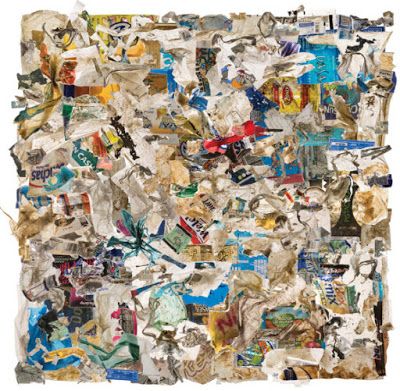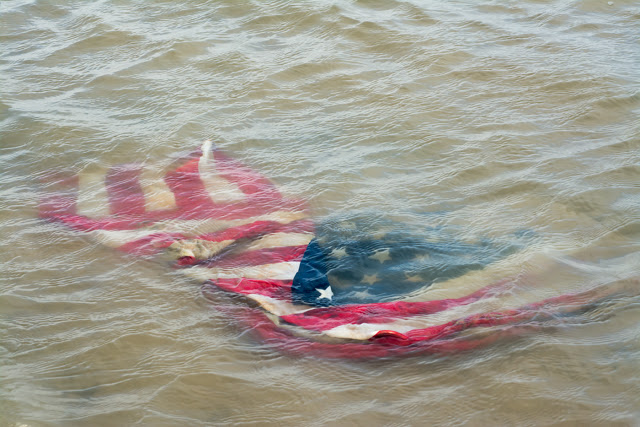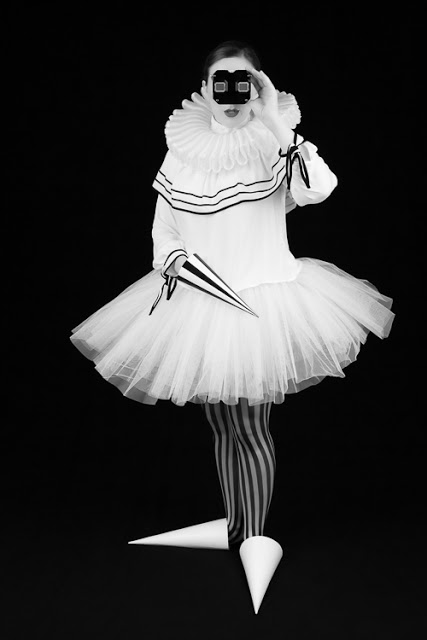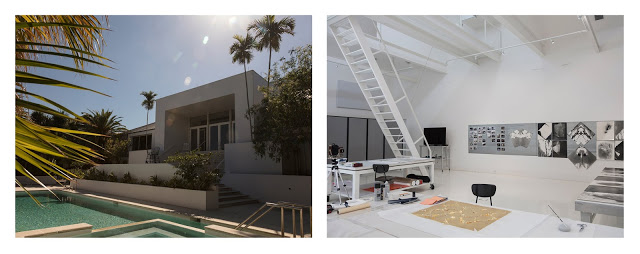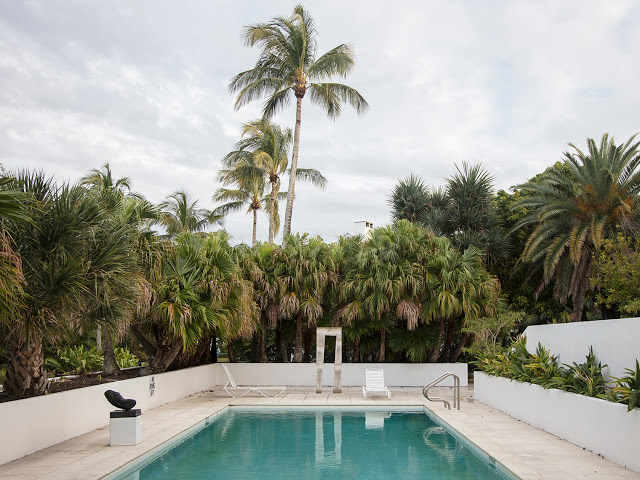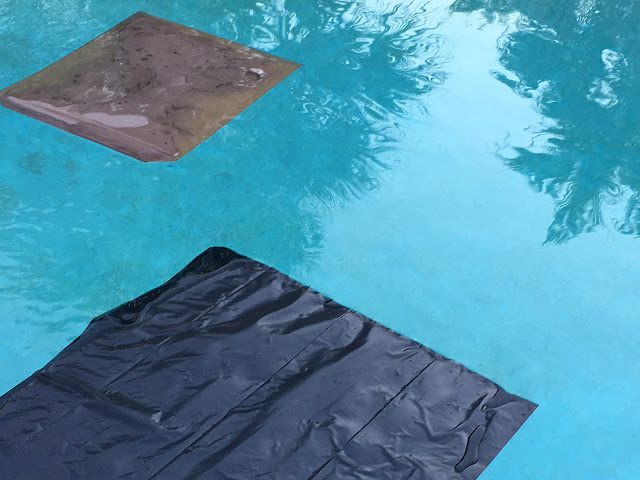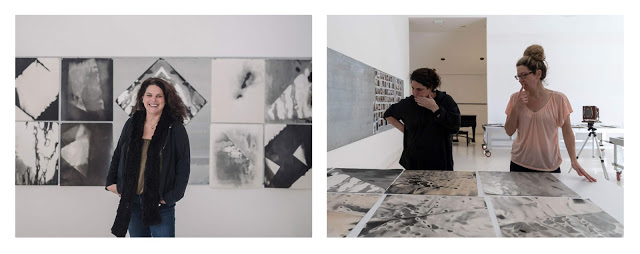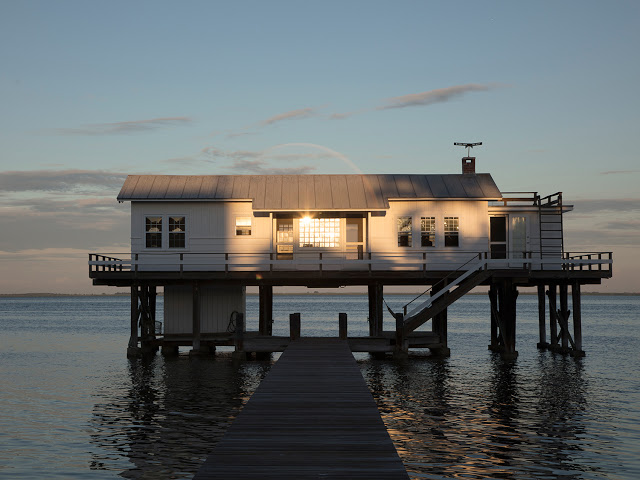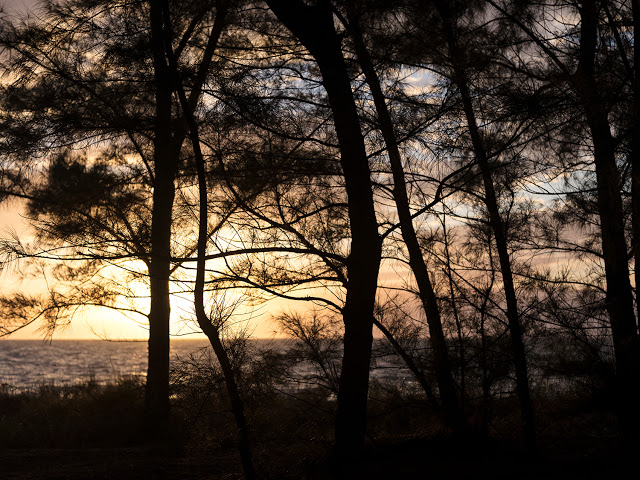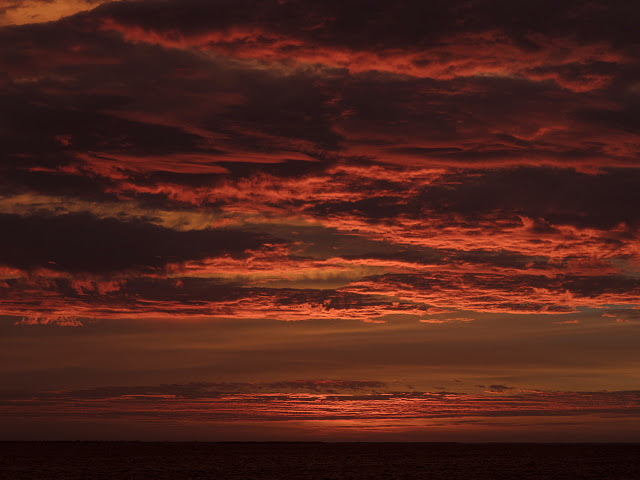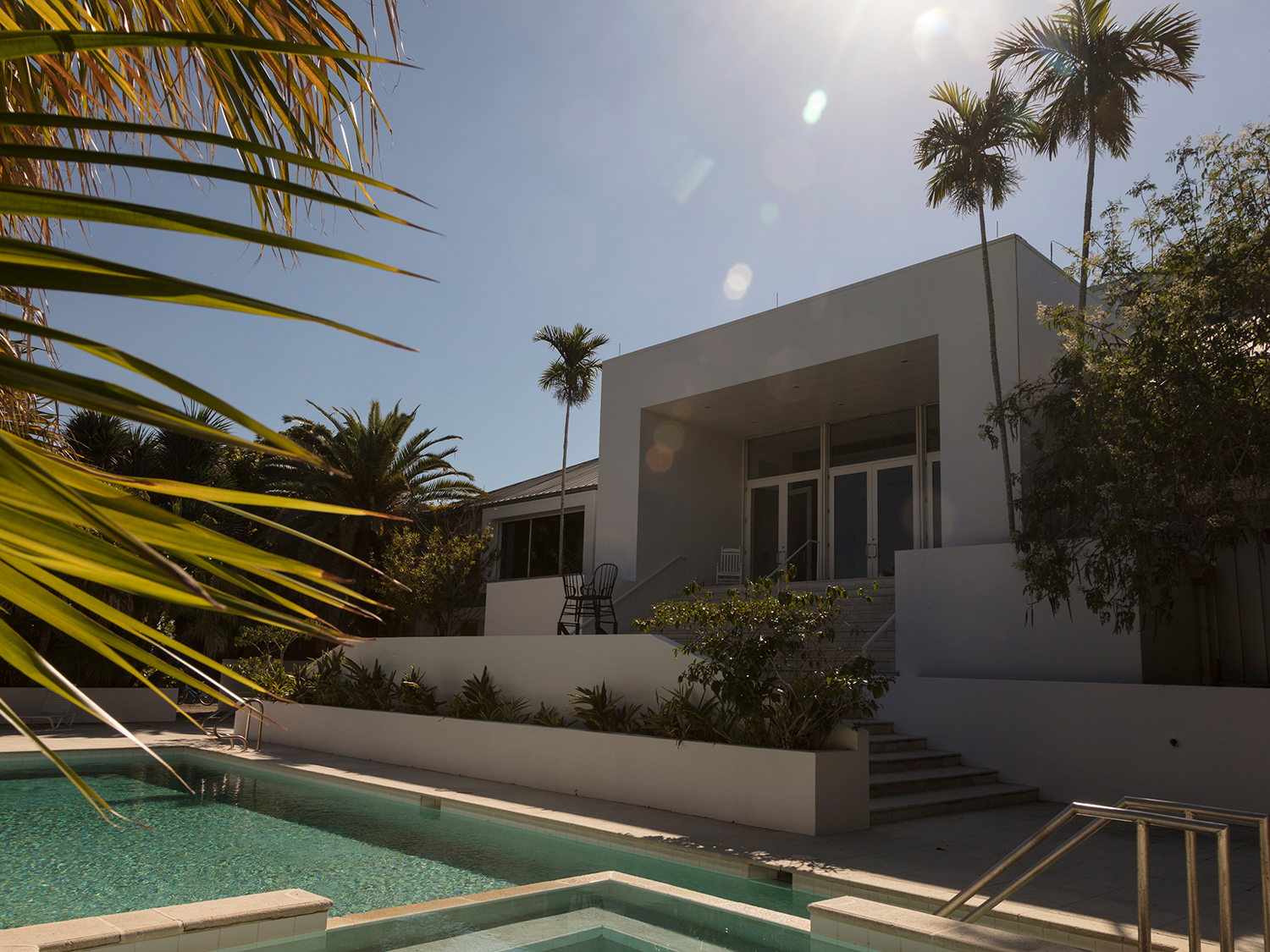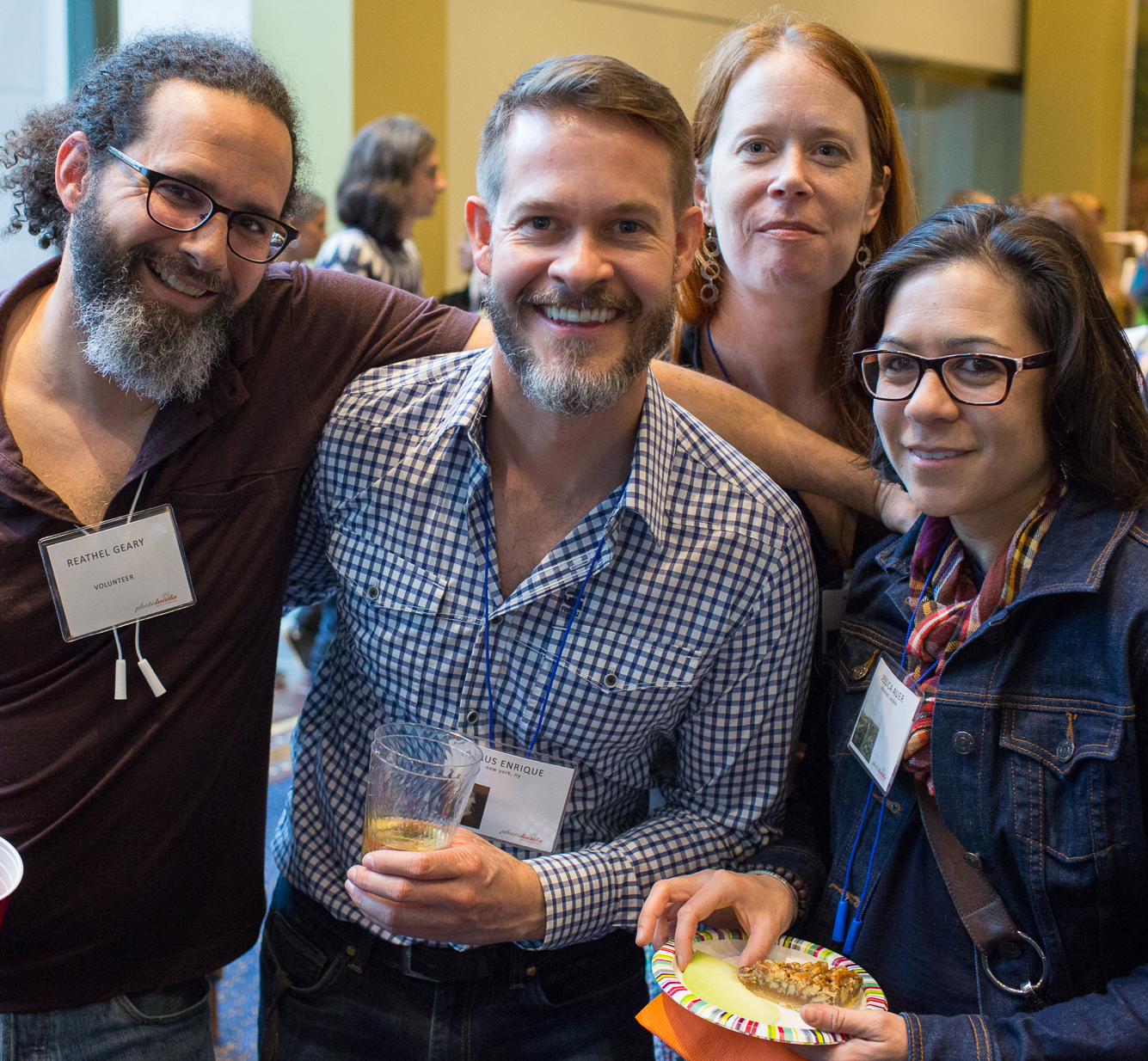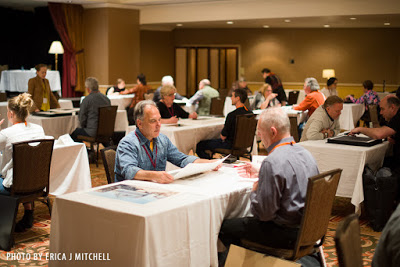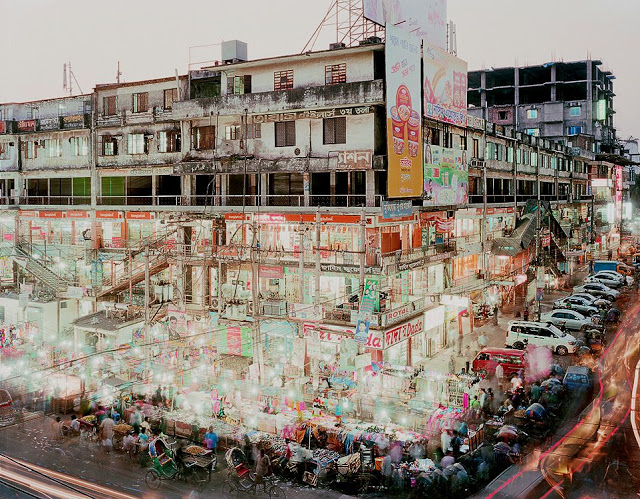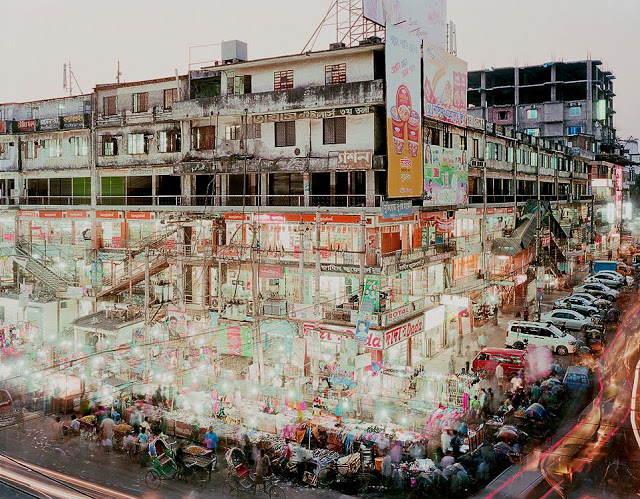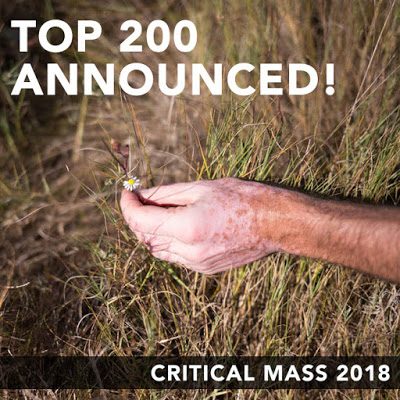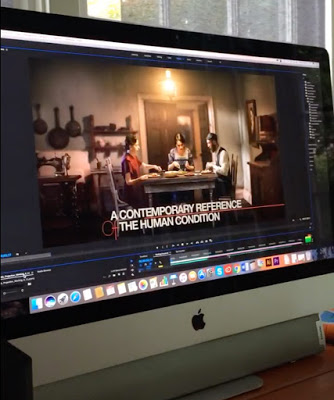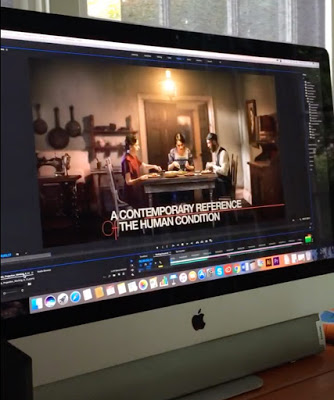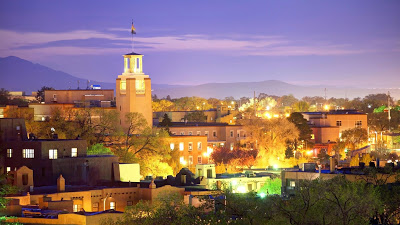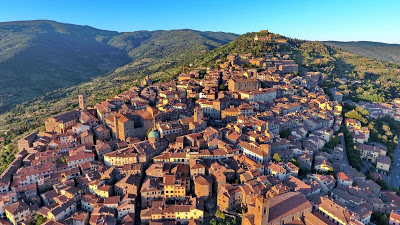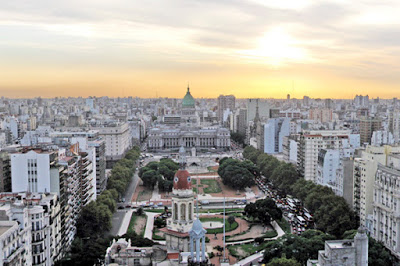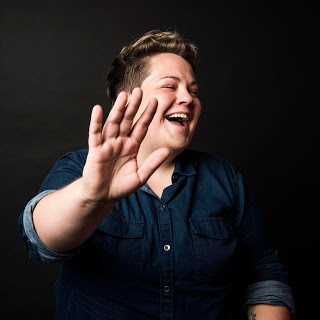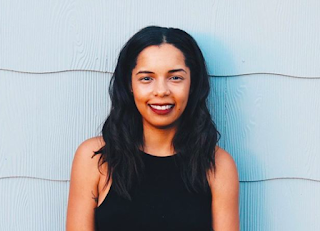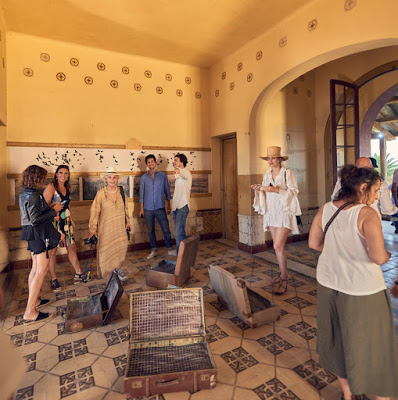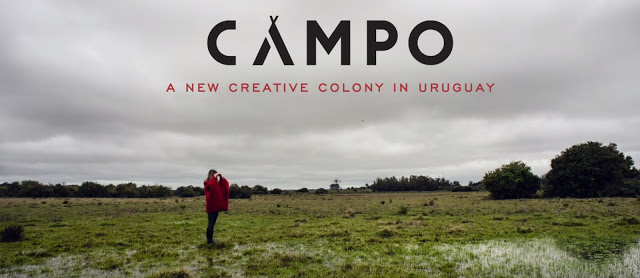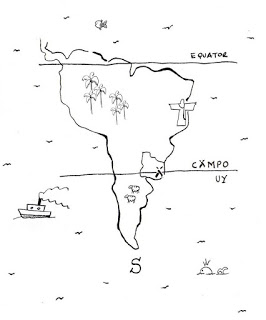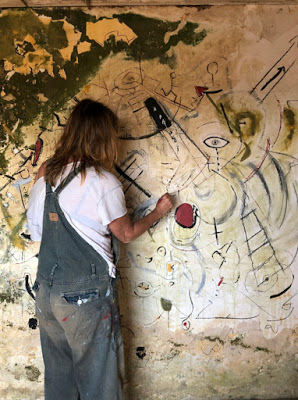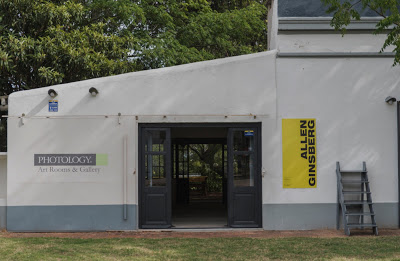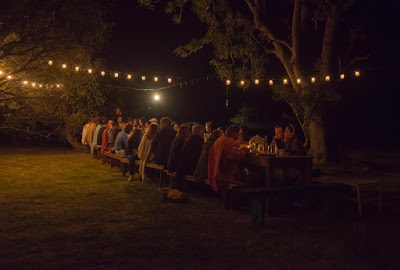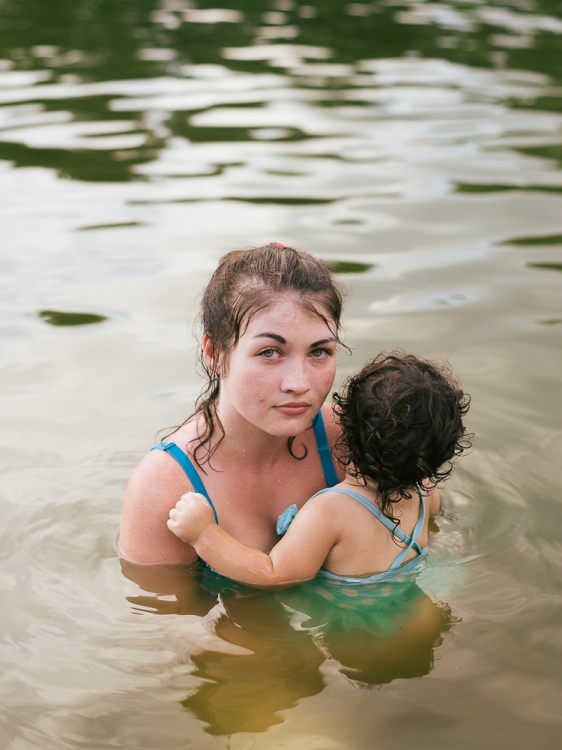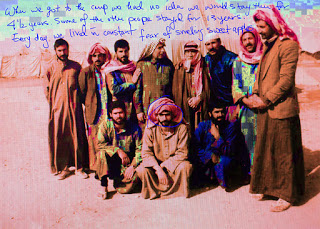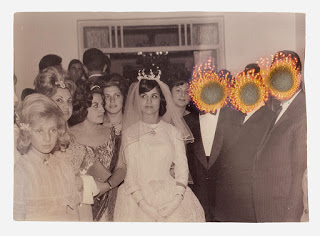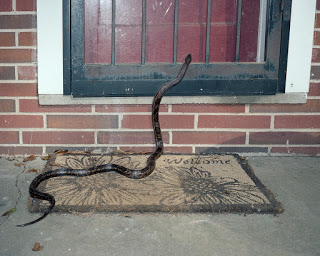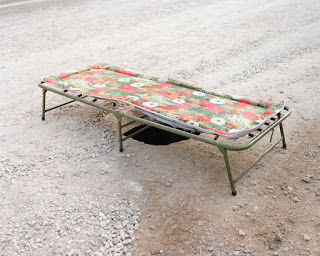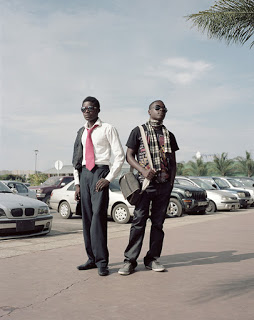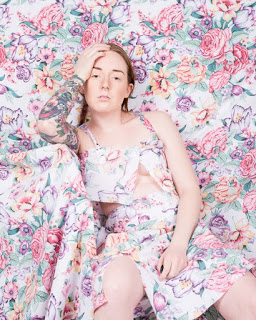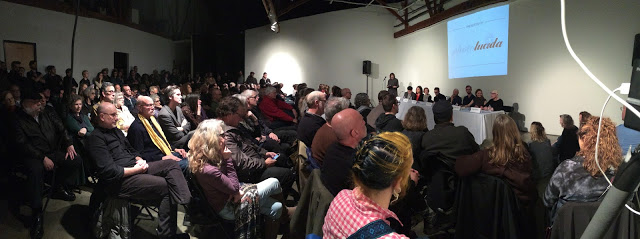THE STATE OF PHOTOGRAPHY IN PORTLAND event hosted by Photolucida on January 11th at Disjecta Contemporary Arts Center played out to a crowded house – thanks to all the curious people who came out! Photolucida was pleased to act as a conduit to many points of discussion by both the panel and the audience. And – it was great to see so many familiar (and new!) faces during Social Hour.
Before the event, the five questions below were sent out to fifty people in the Portland photo community, and we are happy to share the answers with the public.
Thank you to our panelists:
Dr. Julia Dolan – The Minor White Curator of Photography, Portland Art Museum
Lisa DeGrace – Executive Director, Blue Sky
Sam Slater – Co-founder, The Portland Darkroom
Jennifer L. Stoots AAA – Certified Photography Appraiser, Photo Historian
Ray Bidegain – Photographer, Educator, Portland Art Museum Photography Council
Blue Mitchell – Publisher, One Twelve and Diffusion, Photographer
Shawn Records – Photographer, Educator
Grace Weston – Photographer
RESOURCES:
Oregon Focus
Questionnaire responses:
How would you describe the current photography scene in Portland?
Fragmented, with little support for fine art imagery purchasing by collectors. Photographers are friendly and most often help each other, but there are a few highly competitive/smug personalities that intimidate some newcomers and don’t set the stage for easy event planning. Not enough great exhibits to view and be influenced by. Larger groups don’t appear to work seamlessly together. Wish there was a central calendar that lists ALL events, classes, shops, etc. We also don’t seem to have galleries or events that support local work. It would also be great to bring different photographers together with the common public such as they do with The Fence in Brooklyn. A quarterly print publication would also be nice to showcase the work of Oregon photographers. I don’t know if grants are sufficient…it seems like they fall into the $1500 levels for photographers but I could be wrong.
There isn’t much of one: there’s Blue Sky, Hartman sometimes, Photolucida doesn’t really count since 98% of the programming isn’t local, the new Portland Darkroom is really just a collaborative for like 15 artists with a tiny bit of public time. Not a community space. Photo clubs/councils are mostly older people, so they’re aging out.
I think that we are extremely fortunate to have a solid photography scene here. The curator of photography at the PAM, Julia Dolan, is engaged with the local community, we have Blue Sky/Oregon Center for the Photographic Arts which has several exhibition opportunities with the drawers program along with Nine Gallery, as well as traditional photography galleries, like Charles Hartman Fine art.
I feel like it’s getting more fragmented or decentralized. Maybe the energy or excitement is waning since I first moved here 12 years ago. Mostly I feel this way because of the closure of Newspace. I imagine its also because I am getting older, maybe not meeting as many new photographers, and some of the ones I met when I first came here have now moved away.
Your first question about the current photography scene here in town I believe is small, yet growing and wanting to expand more into the community. I think there are few opportunities to see/and speak about photography and the current trends and conversations about photography. I would like us as a community to use more collective resources by joining forces in collaboration with academia, other local galleries. Perhaps some of the local bookstores and other art entities I think would add depth to the photographic scene here. The April month of Photography is something many look forward to, I do. It’s a time we can really shine.
I’ve noticed that the photography scene has always lived in pockets without much intersection. Historically, it has been the Blue Sky, Photolucida, Newspace, and Blue Moon groups, for example (with a few smaller ones scattered here and there). We are all aware of what the other groups were doing but don‘t interact or collaborate much.
I’ve noticed a shift in this dynamic. I suspect that some of it is societal, due to the political climate and the state of the arts in a broad sense, and some of it is local…after Newspace closed, there was an intense feeling of the community being scattered and uncertain; it seems that the community is wanting to come together in a more cohesive way and I find that to be really exciting and encouraging.
I make no claims at having much of a clue as to the wider photo scene here. I will simply lament the loss of Newspace, which seemed to have been the hub for photography here. That’s left a vacuum, and perhaps Photolucida can help fill that a little with these monthly events (and perhaps other things as well).
It feels as if there are a lot of photographers in town of varying degrees of commitment and time spent practicing their art, which is good. I always enjoy inviting various people in town to join us when a visiting photographer arrives. Harrell Fletcher’s MFA program attracts so really dedicated practitioners, but it’s a small program and, unlike San Francisco or New York or even Albuquerque, we don’t have a long-standing tradition of advanced photographic education. I’m hoping that Ron Jude being in Eugene helps to change that a bit. I think we’d have a slightly larger “scene” if that happened, perhaps even with photographic shows at galleries other than just Blue Sky and Charles A. Hartman.
I think there’s a vibrant photography scene in Portland due to the support given to it within the community. The Portland Art Museum’s Photography Council actively supports photography not only through membership, and that membership’s funding for acquisitions for the Museum’s collection, but also through the very popular monthly Brown Bag Lecture Series that features photographers from the Northwest and beyond. That lecture series is partially funded by Pro Photo camera store, which is another factor in the local scene, in that many cities and communities no longer have a full-service professional-level camera store. And, to serve the specific analog scene in Portland, we’re fortunate to have not one, but two shops that specialize in film photography: Blue Moon, and Citizen’s Photo. While there have been losses in the community gallery scene (Newspace and iWitness) the newly-organized Portland Darkroom Group (not sure of the name) has opened to take the place of the Newspace processing and printing space, and other local small galleries continue to offer regular exhibits of area photographers. I think Portland also counts LightBox in Astoria as a “local” gallery as well, featuring juried exhibits as well as “The Files,” that show select prints of accepted photographers. Blue Sky is a nationally recognized photography gallery, which also offers Northwest photographers the opportunity to show select prints in a similar fashion, called “The Drawers.” Portland is also home to the oldest continually operating photography gallery in the United States, Camerawork Gallery, which shows local and national work on a monthly basis. And Charles Hartman Fine Art also features internationally recognized fine art photography in its rotation of shows.
Blue Moon is additionally notable for its employee gallery shows and its customer gallery exhibits, with affordable images on offer. And of course Photolucida is based in Portland, adding another fine art facet to the photography scene. While these thoughts paint a vivid picture of fine art photography, Portland is also home to a number of photographers in the documentary field, whether photojournalism, editorial, or street photography, all with a firm foundation in the history of photography as communication. The decline of the Oregonian as a newspaper, and as a once-renowned staff of prize-winning staffers, has meant a concomitant decline in employment for photojournalists and the outlet for their work. Most editorial photographers who call Portland home, therefore, find employment (assignments) outside our city, through magazines based in publishing capitals like New York and Washington, DC, with travel taking them world-wide. The local benefit is that these photographers contribute to the local scene through lectures, workshops and mentoring.
The loss of Newspace with its classes and facilities was very unfortunate. In spite of that, I do think the photography scene is strong. It is open and friendly, although since so many have been around and know each other it may seem like a closed-system to outsiders. I don’t think it is but am aware that some feel that way.
Compact and healthy. Amateur mostly, which is glorious. Some shining lights.
I’ve noticed that photography in Portland tends to be particularly focused on antique and analogue processes, but there is also a small cohort of practitioners who are very interested in pushing the materiality of photography to move more into the abstract and sculptural realm, as well as thinking about photography as a medium conceptually.
There seems to be a clear separation between the professional career photographer (ie; weddings, commercial) and fine-arts photographer communities (of course with exceptions) and within the group of fine-arts photographers, a special subset who are less likely to accept/embrace non”straight” photography.
The photography scene in Portland is seemingly ever changing in that it has always had a solid footing with establishments such as Blue Sky Gallery, PAM, Elizabeth Leach Gallery, Hartman Fine Art Gallery, Newspace etc., nonetheless the scene always seems to be on the verge of taking risks and supporting/representing contemporary photographers from the area. While we did see a huge blow to the photo community this year with the closing of Newspace, we also witnessed a reinvigorating energy come forth with the creation of the Portland Darkroom. There is definitely a new wave of young photographers that are bringing fresh ideas to the table. It would be great to find a way to continue to support and encourage the dialogue of this younger community.
In some ways Portland is just on the verge of making it big – and with that hopefully we’ll see an influx of money rolling into the city. We’ve got an art scene but not many collectors. Portland becoming more popular of course is a mixed blessing. We need more people with money to move here and buy art, but with that comes unaffordable housing, forcing many of the people that gave Portland its reputation to move away. Most of the people who work for Intel live in Hillsboro but that’s going to change. So – I think Portland has a well-defined aura and reputation but perhaps that reputation will only be around for a short time longer… and maybe that’s a good thing, who knows…?
Fractured but strong. We have a very robust scene for creatives of all types. Social connectivity allows for bonds between individuals to be developed without needed in hub location for people to meet.
Vibrant, diverse, in peril.
What is your impression or opinion on Portland’s photography community compared to other like-minded cities (New Orleans, Atlanta, San Francisco, LA, Seattle, Santa Fe)?
I think we have a vibrant community yet we have a long way to go to match the spirit and risk-taking events that take place in other cities. We play it pretty safe here and I don’t think that stimulates people very much. Who is doing highly controversial work here? It is not seen or promoted very much.
No real idea. I think cost of living has been pushing artists out for a number of years now, so there’s less vibrant, new, fresh programming being created here. I hear Detroit is cool.
I lived in Atlanta for 40 years. In my mind, Portland was always better than Atlanta for the sake that people seemed less competitive here. It wasn’t so much about getting ahead, being better than the other photographers. (My opinion follows, can’t say this is a fact:) People in Atlanta are more busy, more focused on money, career success, fame. In Portland there is much more sense of community, connection, shared experiences, quality of life. Almost everyone I’ve tried to meet and connect with has been very open to taking the time, talking with me. And this is without any of that kind of thinking I saw in Atlanta — you know, the “…What’s in it for me” mentality.
My impression/opinion about the photo community in town is not quite as eclectic as LA or San Francisco, simply because of our lacking demographic diversity maybe? Compared to Santa Fe New Orleans both cities are very involved in the arts generally I don’t know about Atlanta, but I am familiar with Houston. Houston is very vibrant, in particular the center piece of Photography is the large collection that Anne Tucker built up over the years at the MFAH. The demographics are a treasure trove of resources of all including people, monies, commercial interests and healthy private support of all of the arts.
My overall impression is that some of these communities have been taken more seriously, in terms of the photographic arts, than the Portland scene has been. But once again, I feel like this could be in a real time of renaissance. More nationally-noted professionals in the industry are moving here or have their eye on the scene, which is a noted shift. I really think that we have an opportunity to to differentiate ourselves from these communities due to the minds and talent that we are lucky enough to have in our community in addition to our location.
In the professional photography world, I can say that Portland is a magnet for up-and-coming photographers from around the country. They continue to move here in droves, looking for work and community.In the fine art part of things, Portland is still a terrible place to try to find gallery representation, or get serious work seen and sold. Blue Sky is great, but is not a commercial gallery that continuously represents photographers on their roster, and with few other galleries that do so, it’s a tough town for representation.
I think we’re sleepier. Less focused. Less serious. We certainly have fewer venues and no publishers.
I can only speak for San Francisco, having lived there 25 years before moving to Portland. I think Portland is a far more active city currently since SF has pushed out the arts and particularly photography in favor of tech. That is to say, independent photographers can no longer afford to live in SF. It used to be that SF nurtured it’s reputation for art, and from what I know, aside from the “donor class” art, they no longer do that. SF photography is more set apart from the community, i.e., expensive galleries and private collections on display, where Portland is integrated within the community through affordable experiences.
Overall I think we compare favorably. People try to be supportive of each other, which is huge and important. We don’t tend to view each other as competitors; rather, we are interested in what work people are producing.
It would be great if we had serious academic programs located here. It seems a scattering across the institutions and none heavily invested in photography. More community focused than Seattle. Less integrated with the fine arts world as San Francisco (which has both positives and negatives). Dunno much about New Orleans. I just reckon Portland has a reputation that outstrips it size in many ways. It doesn’t seem to have much of a market but that’s no surprise. I like the tradition of makers and printers we have here. Photography really is the groups of enthusiasts meeting up because they must for their own sanity. Blue Sky’s Robert Frank/Steidl show proves that the city can draw good stuff in.
Unlike larger cities, I’ve found that Portland’s photography community is more welcoming to newcomers and actually is supportive and collaborative. However, larger cities seem to have more money flowing towards the arts and more individual collectors, which we desperately need more of if artists are going to be able to make and show work in Portland. I truly value the community spirit here but the arts economy is far from robust.
Portland has a strong photographic community that consistently shows up in support of events, openings, dialogue. Some of the other larger cities seem to possibly have more financial support around the Art scene and therefore have a greater willingness to take risks and experiment more with exhibitions. I would like to see Portland’s photography community more united and provide more opportunities for the community to come together around discussions, lectures, events, etc.
Each of these cities has a distinct core element to its history and people. I feel that Portland’s art scene has yet to create space for the large group of diverse photographers that is currently happening here.
I don’t think the community here values their work as much as other cities. There seems to be a race to undercut pricing just to get all of the work. It seems like networking, which is important everywhere, is more important in Portland. Maybe more important than the quality of work.
In Portland’s current cultural climate, how much weight is given to the arts, and in particular, photography?
We are provincial here. Few avenues to submit work and get recognized for it via shows or grant funds. I wish we could pair corporate funding with support of artists. Photography seems to have a side chair to other arts such as dance, music, painting.
Not much. But, to keep this in perspective, I think ALL arts are suffering here, including the biggies like theater, ballet, opera, etc. I don’t know what the hell millennials do with their time. Snapchat?
We have an incredible resource – the Regional Arts and Culture Council – that is a great resource for all of the arts. Photography has become a very popular medium, so it appears to garner a lot of attention, and my opinion is that it receives an equal amount of attention as other media does.
There is a large amount of community spirit, there are also many collectors actively engaged in collecting regional photographers.
I think Portland gives a lot of focus on the arts. Not much money. But a lot of interest. Atlanta, Houston, etc. have a lot of wealthy folks who like to collect art, donate money to institutions. But it all seems to be self-serving — to get your name on a wing of the museum, or under a photo in the museum. Here people want to live with art, want to see it on the walls of buildings, in public spaces — want to buy affordable art for their middle-class homes. I think this is changing, as Portland becomes more affluent. Maybe it’s become more like other big cities. But having worked with Caldera, Right Brain Institute, P;ear, Newspace, and other non-profits here I’ve been really amazed at how much folks want to get involved in experiencing art, in particular photography. And, of course with revolution of digital photography, and social media, there is much more sharing and excitement about photography — with lots made and viewed by Portlanders.
The weight given to the arts in Portland: theater, dance, music, identities such as PICA seem all are sustainable. We have the Portland Photo Event and Guy Swanson’s calendar of events all online notifying our community of photographic events which is a good thing.
Portland is a city of artists and the artists themselves understand that the health of any community is directly tied to the arts and therefore, give huge weight to their own craft and community….having said that, the Portland Art Tax has been hugely unpopular and many people haven’t paid it (and the city has done little to offer consequences to not paying). The photographic arts are difficult in a unique way. People in the larger community want photography but don’t necessarily want to pay for it or can’t afford to pay for it; it’s both valued and devalued. (And that’s a larger topic of the value of photography in the internet age.) In addition, people seldom buy work off the walls of galleries in Portland and collectors don’t think of Portland as a place to look for photography for their collections. This goes back to the previous question of how the Portland community is viewed compared to other markets.
I think Portland suffers from a very long tradition of not wanting to stand out or be recognized or to appear too big for one’s britches, which limits the robust funding of arts in town to a few families and patrons. Like, what, five to seven? No one is competing to get their name on the list of donors as they do in New York, and involvement with the arts has very little status. Except, again, within a few families who have carried the torch for all of us. That keeps us small and quaint.
I think current national politics negatively impact the arts. People are anxious and feel an understandable need to devote more resources to social and political action. Not everyone can do both. Within the art world I think the combined efforts of Blue Sky, Photolucida, the Photography Council, Photographers Forum, Blue Moon, etc. all combine to give photography weight in the local art scene.
We lack ongoing serious photography and art criticism; the Oregonian reviews far more food and drink places than galleries. While we can get the event listings, having a serious public discussion ensue is more difficult.
Generally in the arts, I think there is a movement away from grassroots and avant garde, towards more mainstream work/approaches This may not as true in photography specifically, but it seems unfortunate. Cost of living is a real problem, and the wealth that is coming to the city does not seem interested in the arts. (Arts organization staff) are frequently being told that we need to personalize outreach and fundraising, etc. to these individuals, but the reality of small organizations makes that a challenge.
PICA/Precipice Fund/RACC/OAC/Calligram are all keeping the arts world lively. The photo scene is definitely more conservative than that in the other arts. But it’s smaller, so… ?
I think that photography is often seen as a fairly accessible and straightforward art form, so many people who may not be educated in the arts tend to feel more comfortable attending photo-based shows or going to photography exhibition spaces. This is one of the things I’ve always loved about photography. As a gallery owner myself, I’ve found that photography (on the less expensive end) tends to sell in Portland more often to casual art collectors than other mediums. That said, I feel as if those in Portland with disposable incomes tend to prioritize other types of spending rather than investing in the visual and performing arts. I think the challenge, which Jennifer Rabin has done a lot of advocacy work around recently with the Art Passport PDX program, is to educate more Portlanders about the importance of supporting the arts not only by attending exhibitions and visiting galleries, but by making charitable donations to arts nonprofits and collecting art, which is not out of bounds for the everyday person here.
The art scene is often touted as a primary reason one might move to Portland, but in practice it seems to rank under Booze, Food, and Nature (in that order?) and then performing arts, and then visual arts – including photography. Portlanders are more likely to pay for an experience including food/drink over an object.
It is hard to say how much weight is given to the Arts in Portland’s current cultural climate. It does seem like there is a lack of support on some fronts when we witness spaces like Newspace close their doors after 15 very impactful years in the community. There are a lot of new people and businesses in Portland, potentially some of those folks will step forth and create new opportunities for the Arts and Culture scene to expand and continue to grow.
This moment in particular photography as a form of communication and direct messaging has the opportunity to hold a critical place in our large social conversations. That said, I don’t feel that the greater Portland environment is moving towards “Makers”, I feel that the city has reached its saturation point and that while individuals might come and go the overall relevance of art within the greater context of this city will continue to limp along. I was lucky to attend then-Commissioner Sam Adams’ ‘Meeting On the State of Arts’ in Portland in 2007, and while I can see the direct benefits of that meeting for the investors, PDC, and other large-scale property developers, I’m sad to say that the greater question of what benefits/incentives does the City/State provide for artist directly is still vague. Artists are losing resources due to rent increases and high property value, and ironically this is due to the perception that more space needs to be made.
I feel very positive about the amount of attention photography receives in the overall cultural landscape of Portland. I feel it is proportionate to the amount of work shown and the galleries that support the work. I do my best to elevate this conversation every single day. I could even get dramatic and highlight that by writing it in all caps. EVERY.SINGLE.DAY. (This conversation begins and continues with education and I see educators, parents, artists and community members recognizing the value of a rigorous photographic curriculum on a regular basis.)
I’m not sure really that I can speak to that as I’m not that connected to the cultural climate. The arts are huge in Portland! But certainly there could be more emphasis here. More education and more places to show work for photographers as well as support for printing and publishing work.
Where does support for the photo community come from? Financial, community spirit, or otherwise.
We have a great need in this regard.
Well, the Portland Darkroom just raised over 20K on a Kickstarter campaign. Though, that was undoubtedly spurred by extra engagement because of the drama around Newspace’s closure. They won’t be able to raise money like that again. There are granting organizations, but all of that just seems so stale and establishment and ineffective to me. I strongly think that in order to succeed you need earned income. Businesses (even nonprofit ones) need to create products/programs that people care about and want to support with their hard-earned cash. I often see nonprofits complaining that the problem is lack of public support, but the real problem is lack of programming that’s meaningful enough that folks will pay for it. You know, you can’t run a restaurant that serves crappy food and complain that you’re not making money because the public doesn’t care about you. You just need to make better food. Earned income is key. Trying to get donations/grants/etc. is disheartening and there are so many strings attached it’s not worth it. I say, chuck the focus on donor/grantor support and concentrate entirely on making earned income via rad programs the community loves. What would it look like to let go of the idea that “support” needs to come via donations and grants and gifts? It could be so freeing! Serve the community. Not the imagined community – the community that’s actually here. Who are those folks? What do they want? Or, think big and go more national/international – what does that community want now? Here’s a key question arts nonprofits (or businesses of any kind) need to be asking: What is the community tired of, what are they frustrated with, what are their major problems? How can these problems be solved? That’s essential. That’s what people are willing to pay for. Support without exchange of goods or services is dead. Give people solutions to the problems they have. That’s how you get engagement and cash. My two cents.
I have worked closely with my gallery, the Froelick Gallery, to always have a show during Portland Photo Month, and Charles Froelick always participates in Portland Photo Month by having at least on photographer installed, even though his gallery doesn’t show photography exclusively. It would be great if all the institutions got together and agreed to hold photography shows, including Disjecta, PAM, PNCA, OCAC and all of the commercial galleries (PADA). I think this notion of participation might speak to a larger issue – one of real estate. How can we get all of the institutions together even though they are spread throughout the city? PAM is only slightly separated from the gallery core, PNCA is now located near the galleries, but OCAC is pretty far out and Newspace is gone. Disjecta is fabulous, but again, it’s located pretty far outside of the city core. Maybe starting a dialogue between all of the institutions to host events during the course of the month, and perhaps bringing something to Portland on top of Photolucida, which is only a few days, to try and generate interest from a wider audience. I think that programming beyond the First Thursday is a good idea. Following Froelick’s example – he has his artist talks on Saturday mornings. They are always well attended even though they are at an odd hour. If we could try to do more of that throughout the month, we might be able to engage a broader audience.
Mostly it comes from community spirit. But I have been able to make more money here as a fine-art photographer than I ever did in Atlanta. But I think that is because I haven’t tried to be a high end commercial gallery photographer – -but rather have received support in smaller amounts — for example selling a print for $300, or getting $1200 from a small grant — things that the big time fine art photographer wouldn’t waste their time with. And I’ve had great success teaching photography here — again because of a sense of community interest in photography as an art.
Financial support is a real issue. Currently, grants from larger organizations are a key to making and sustaining work in our city. Otherwise, much of the financial support comes from each other at this point….The Portland Darkroom was funded by the community itself through a Kickstarter campaign and a lot of dedicated people. Right now, I notice the community wanting to become more cohesive (you reaching out with this questionnaire is a prime example). The pockets of community seem to be crossing over and supporting each other’s exhibitions and campaigns. It’s a bit of a feeling of “we’re all in this together” and it’s an exciting shift.
The supporters of photography are even fewer than those who support art. Like, what, two? As Newspace has demonstrated, photography is not on the radar of the handful of donors, and the foundations give small little gifts. So, I’d say it is, on the whole, absent.
It continues to be largely self-supporting. We still lack enough patrons to generously sustain programs, as the demise of Newspace suggests.
For non-profits, I think the big weight right now is towards arts organizations becoming actively engaged in diversity, equity, and inclusion work. If this is not a genuine focus of your non-profit, funding from foundations is tough. But it is absolutely time (past time) for this work. I also see a small age-war going on, where generational differences in approach, attitude, language, etc. prevent cross-pollination or appreciation.
Community. Self-facilitated.
Financially it boils down to those few people we all know…Re: community spirit (measured in gallery visitor attendance and conversation) — that fluctuates a lot, but dramatically improves when there’s arts writing in the local newspapers and other media coverage.
I am not sure where support for the photographic community directly comes from in Portland. It is apparent that the community is hungry for more creative outlets due to the outpouring of support in helping The Portland Darkroom crew get on their feet as well as the packed houses at Blue Sky Gallery for the Gerhard Steidl lecture and Robert Frank exhibition, and the positive response for Minor White exhibition at the PAM. Where does the role of collectors, donors, grants, etc. exist in Portland and is that a link that can be strengthened to support the growth of diverse concepts in the creative scene?
I have found the strength of the newest institutions (The Portland Darkroom, Wolffe Gallery, Jailhouse Studio) and the continuing stability and organization of Blue Sky Gallery are our newest center. Groups like @coffeeandcameraspdx and others are available online if you are using the right resources and understand how to navigate them towards the sphere of interest you hold.
I think it comes from every sector, from simple, community based health-care projects that incorporate “Photo Voice” style work into commercial campaigns, to funding organizations like RACC, Oregon Community Foundation, Blue Sky, Photolucida, individual grants, crowdsourcing campaigns, and occasionally private donors.
I think the support mostly comes from within. There doesn’t seem to be any substantive support financially from any organizations in town. Again, that could be because the community doesn’t value itself as much as other communities I’ve seen. There should be an infusion of financial support from somewhere in order to get larger bodies of work accomplished by photographers.
It probably comes from a combination of many of the things I’ve already stated: showing up in person, having enough collectors to sustain print sales, keeping galleries in business – enough people who are interested in art to see what’s happening at the museum and/or willing to brave the darkness and rain to go to show openings. I’m not so sure about common places to work. Newspace of course filled that need but is now gone. I would imagine it closed for a variety of reasons, perhaps one being that people feel they don’t need common space anymore as most everyone has their own copy of Photoshop and a desktop printer that makes archival prints. For me, the real pull with RJs group was seeing prints in person, having an in-person conversation with the photographer and have it be a judgement-free atmosphere.The thing everybody had in common was a love of photography. I would think that a place where people are invited specifically because they are working at a high level and can bring in a six-pack or bottle of wine seems to be the kind of thing that the internet can’t duplicate. But I bet you most people feel they get what they need from free YouTube demo videos and they don’t realize the value of a personal relationship. That’s the thing that would have to be promoted – the in-person experience.
Portland Photo Month has been in existence 7 years – instituted initially as a collaborative endeavor to promote photography-related exhibitions and events every April, it remains fairly low-key as far as “city-wide celebrations” go. How can we as a community all take part and be involved in the development of this idea?
I think it is better to focus on developing a more comprehensive photography culture all year than focusing on one month out of the year. If you want to stay with that concept, then planning for it should be an ongoing process, having a committee comprised of various pertinent people who develop events that capture the heart, and not using the same old formula of having shows, lectures, classes. Think of other creative ideas (outdoor exhibits, pop-up shows, roving portrait studio, more edgy classes, organized group shoots such as PDX Squared, etc.) to draw people away from getting their influence from online communities and visuals. I think it has to have a shot in the arm to get people behind having only one month of photo-focused events. My vote it so spend more time (less time boxed pressure) on programming all year around.
Full honesty? I’m totally uninterested. I don’t think it’s worthwhile to invest time, money, or energy in local-only pursuits. Local is dead. Why bother spending effort on building a local program when you can spend the same effort building national/ international programming and get a far larger return with your larger audience? Cost-benefit analysis.
I think maybe one suggestion is to continue to expand public art events as part of it. Something like a pin-up show, where community members can create a pop-up exhibit. Also other ways to get work out there all over the community. Also would be great to involve kids at schools, let them have exhibits at their schools. I guess I’m saying a stronger outreach or educational component.
At this point, it might be worth creating a counsel that include members of the various photography institutions that help brings this to life. Portland Photo Month has so much untapped potential… we’re just getting started. I’d be interested in being part of this.
All of us need to improve our outreach and design programs accessible to all parts of the metro area. We are heavily inner-Portland based, your recent move to Disjecta being a notable exception. It may require us all to look creatively at ways to involve more people by bringing events into their neighborhoods.
I have no idea what the photo students at PSU, PCC, UoP, PNCA are up to. Might they be looped in?
We might continue the momentum on Photolucida “off years” by having a noteworthy annual event which will draw more attention to the all of the individual Gallery’s scheduled shows? Is there anything to Portland Photo Month beyond many galleries scheduling photography exhibitions? (Would need/benefit from securing a community partner — a bank, etc.— to sponsor the event and also publicity.)
Maybe it makes sense to find a way to get all the voices on the table prior to April to see what the community has to offer and what seems feasible to make happen. The Photo Months in the past have been amazing opportunities for the photo community to take part in a vast array of exhibitions and happenings. Maybe it’ll stay “low-key”, or maybe folks will come up with more grand ideas. I am a firm supporter of encouraging individuals to have a voice and take ownership of their ideas and provide those ideas space to flourish.
Get PADA to play along. Somehow this is a true test of social connectivity and creating shareholders. There are so many unique opportunities to join our diverse photography inclined groups with greater community.
Creating incentives for educators could be a beginning—parents love to support the work of their children and their educational communities. We could also encourage more non-traditional avenues for events during that month, or condense it, following the model of Design Week.
I think as far as community goes, I found that during Photo Month, it is imperative to attend as many events as possible to show support and also to meet and be inspired by the photographers coming into town. It helps the community to not be so insular. Find micro locations to show bodies of work during the month…be it a fun coffee shop or random industrial space. Getting visitors exploring the town a little bit more and seeing work from not as well-known photographers.
Well, I’ve lived in Portland for 10 years and I stiff don’t know what is meant by Portland Photo Month. To me it sounds like a kind of label to encourage the mainstream public to be aware of photography that’s happening in Portland? I guess I still don’t know what that means. What does that particular month offer that the other months don’t? Is it meant for non-photographers?
How can different photography institutions/photographers work more effectively together to create a stronger network?
Make events inclusive and be very discerning about who has touch points with the public at large: only inclusive and approachable people. More communication and synergy between groups. I think an online website and comprehensive calendar would help. Tired of getting info from so many sources…I am starting to not open some of the emails because we are all bombarded with too many emails and solicitations. Newsletters are effective, but if I knew i could send someone to one website to get a wealth of knowledge, and out of town people could see this, then it would bring the groups more together. Post guest blogs, etc. Then each group have still have their own identities, but there is one place to go to see what is happening that night, the weekend, when cousin Pat is going to be here, etc.
Hmm – I don’t know. I’m uninterested collaborative efforts of any kind. When there are more cooks in the kitchen, everything is less effective, everything is compromised and bureaucratic. In order for something to be amazing and well directed, it needs a fabulous, visionary leader.
I think the question here should be what do we want from said network? What benefits are we looking for as a community? Newspace seemed to be the perfect fit for a community based photography center where everyone benefited from the darkroom space to the classes to the lectures. Yet it went under because of lack of funding. There is now a group trying to start a community darkroom by using a kickstarter type campaign, but if Newspace was not sustainable, how can that survive? And really, what is the goal of the network of photography? Is it lectures? Access to work space? Access to classrooms? I feel like the word “network” is used a lot without actually defining the goal. We should start with defining what the network serves and move forward from there. However, if we presume that the network’s goal is a place for people to connect to photography, should it include an international lecture series? Should it include a workspace? I guess I’m still stuck on what purpose the network would serve.
Good question. I think there are many folks who are involved in more than one of these. I am. So I think it just takes people reaching out, communicating – – building connections.
Creating a stronger network seems to be paramount. Some years ago I believe it was Sam Adams who nominated Julie Keeffe as Portland’s ambassador of the arts/photography. That may be a point of departure for us to continue to explore all the possibilities of our photographic community.
I think the forum you are creating is a wonderful starting place. The desire is there to collaborate and grow. This could be a very pivotal point in the growth and direction of the photography community and it’s really exciting.
While I know PPM exists, it seems I only hear about it right beforehand. Perhaps if there were a way to involve the wider photo community in preparing for it, or showing in it, or putting together events, that might help. How do people get shows that month? How do people get to put on workshops or lectures? Could there be more open calls for work? Group shows? Can experienced photographers have opportunity to share/give back in some ways?
Having examined this question close up, I don’t really think institutions and galleries can, because there’s not enough to go around as it is, and those who have it are holding on tightly. There is not enough there to make something happen at the moment. We are a good place to live, not a good place for photography.
I’m sure no one wants to add more meetings to their lives, or I would suggest a council composed of representatives from every group. They could meet periodically and share their calendars so events don’t conflict and they can more easily promote each other’s activities. I think the Portland Photo Event list serve is very helpful, and Guy Swanson’s newsletter as well, but I’m thinking more of strategic planning across organizations. What do we need from each other? How can we help each other? How can we all expand the audience and improve photographic education for the public at large?
Small grants can work wonders. Look at the Precipice Fund. Hundreds of applicants putting large effort into winning 2 or 3 grand. Good applicants get support. 2 or 3 grand isn’t a lot for a funder, but it’s significant for an individual artist. And the buzz and publicity attached to the annual awards is great for cross-pollination of ideas and raising profiles. I think more micro grants are good for the work and good for the community.
We can plan our programming with more intention of collaboration — it’s hard to build collaborative exhibitions, but when we try, we can partner with each other to host symbiotic programming. Announcing our exhibitions calendars internally, even if the details/dates are not totally confirmed, could help with planning.
The Portland Art Museum does a great job by providing the Brown Bag Lunch conversations, Blue Sky does a great job by encouraging the community to participate in their Exhibition Committee, Photolucida does a wonderful job facilitating the Photo Month. It is my hope that more opportunities such as these will become even more readily accessible for the Portland community through various institutions, galleries, and cultural centers. There is a lot happening in Portland and I am always excited to observe and participate in its further blossoming.
The answer to this question lies beyond bureaucracy and towards a place of genuine interest. Many people might not remember the Stereoscope Museum that called Portland home for many years. Its failure in 2010/11 was a foreshadowing of the deterioration of support for specific art centered organizations. Since then we have lost several non-profit organizations each year, unfortunately for Portland, we are not replacing them. I feel this is a direct effect of how money now moves through our society differently, Kickstarter, GoFundMe, Instagram/Facebook purchasing.
I just begin teaching a class at Mount Hood community college and I find that bringing in guest speakers really creates a wonderful bridge for the students and allows people who might normally not speak in front of class to find their voice around their work. Photographers could mentor much more. Institutions could have more group shows. Also shows where there is some financial backing to support printing. Often it seems that the cost of printing is a barrier for some people have their work shown.
Show up, do work that excites you and teach others how to do what you do.
*
